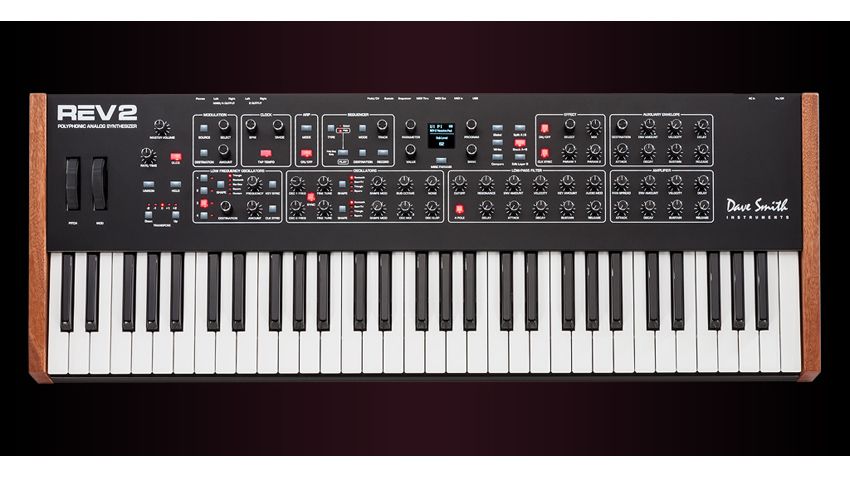NAMM 2017: Dave Smith Instruments reveal the REV2
Following on from his collaboration with Pioneer, Dave Smith Instruments has today announced the REV2, a new 16-voice analog synthesizer that hopes to be a successor to the Prophet ’08 poly synth… Dave Smith says, “The Prophet ’08 has been a real road warrior for 10 years now and people still love it. But we […]

Following on from his collaboration with Pioneer, Dave Smith Instruments has today announced the REV2, a new 16-voice analog synthesizer that hopes to be a successor to the Prophet ’08 poly synth…

Dave Smith says, “The Prophet ’08 has been a real road warrior for 10 years now and people still love it. But we felt it was time to update it with new technology and new features and, at the same time, lower its cost. The REV2 is essentially the result of our effort to enhance and improve everything we could about the original Prophet ’08 and, in many cases, double its power.”
Here’s what’s under the surface in the company’s own words.
The most obvious difference between the REV2 and its predecessor is polyphony. The REV2 has 16-voices as its standard configuration — twice the polyphony of the Prophet ’08 (though an 8-voice option is also available). Since the synth features bi-timbral operation, two completely independent sounds can be stacked or split — layered together or assigned to two different zones on the keyboard.
The essence of its sound comes from two DCOs (plus a sub-octave generator on oscillator 1) per voice, with 4 waveshapes (sawtooth, triangle, sawtooth + triangle, and pulse) and a 2/4 pole low-pass, resonant Curtis filter per voice. These are the same filters used not only in the Prophet ’08, but also in many classic instruments of the ’70s and ’80s. A new feature unique to the REV2 is waveshape modulation. You can vary the “pulse width” of any of the four waveforms by manually dialing in a desired waveshape width or by using an LFO or other modulation source for continuously shifting timbre.
An effects section provides reverb, delays (standard and BBD), chorus, phase shifter, ring modulation, and distortion. In stacked or split voice mode, you can apply a different effect to each layer. Effects parameters can be modulated through the mod matrix, which is twice as extensive as its predecessor, with 8 individual slots and many more sources/destinations.
A new polyphonic step sequencer allows up to 64 steps and up to 6 notes per step. A different sequence can be created for each layer when working in stacked or split voice mode. A separate gated sequencer functions as a modulation source, allowing you to create up to 4 different 16-step sequences for complex modulation. Sequences allow ties and rests, and can sync to an external MIDI clock. The arpeggiator features note repeats, re-latching, and can be synced to external MIDI clock, as well. Other improvements include a premium-quality, five-octave, semi-weighted keyboard with velocity and channel aftertouch, an integrated power supply, USB support, and a crisp OLED display.
“We’ve created a monster,” joked Smith, “and I mean that in the best possible way.”
The REV2 is estimated to ship in April 2017 with a estimated RRP of $1499 for the 8-voice version and $1999 for the 16-voice version. For more info head to the Dave Smith site here